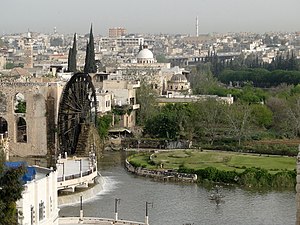Units loyal to President Bashar al-Assad killed 55 people yesterday, including 31 in Hama, the U.K.-based Syrian Observatory for Human Rights said in an e-mailed statement. The army attacked the al-Arbaeen neighborhood of Hama with heavy weapons after protesters took to the streets, the group said. Damascus was hit by a large blast today in the Marjeh district, Al Jazeera television reported, citing the Syrian Revolution General Commission, an anti-government group.
On April 21, the UN unanimously backed sending observers to monitor a cease-fire aimed at ending more than a year of clashes. The agreement came into effect April 12. Since then, 254 civilians and more than 80 members of the security forces have been killed, Rami Abdel Rahman, London-based head of the Syrian Observatory for Human Rights, said by phone today. Syrian security forces killed 11 people today, al Jazeera reported.
“This hasn’t been a cease-fire from the beginning,” Andrew Tabler, a fellow at the Washington Institute for Near East Studies and author of a report on U.S.-Syrian relations, said in response to e-mailed questions. “At first it helped lessen conflict, but given the regime’s use of live fire and shelling, violence has flared again. Perhaps the monitors, when they are fully in place, can help peaceful protesters return to the streets.”
Car Bombing
Resolution 2043, sponsored by Russia and China, nations that objected to tougher U.S.-backed measures against Syria, will allow 300 unarmed monitors to be deployed for an initial period of 90 days. Russia opposes military intervention in Syria, saying the North Atlantic Treaty Organization misused a UN mandate, intended to protect civilians, to bring about regime change in Libya last year, resulting in the killing of leader Muammar Qaddafi.The car bombing in Damascus near the Iranian cultural office in Syria’s capital wounded three Syrians, Iran’s state- run Press TV reported. The blast in Marjeh Square in old Damascus left one of the Syrians in critical condition, the channel said on its website. The cultural office wasn’t the target of the attack, Iran’s ambassador to Syria, Mohammad-Reza Raouf Sheibani, was cited as saying by Press TV.
Videos of Casualties
Videos posted on YouTube yesterday showed bodies on the streets of al-Arbaeen and children weeping after their relatives were killed in the violence. The authenticity of the videos couldn’t be verified.Hama was the scene of a violent military campaign to crush an uprising in 1982 against the rule of the late President Hafez al-Assad. Syrian rebels are now fighting to oust his son in a conflict that the UN estimates has killed more than 9,000 people since March last year.
“The international community keeps walking up to the Syrian precipice, stares down at the ramifications of diplomatic failure, then backs away,” Theodore Karasik, director of research at the Dubai-based Institute for Near East and Gulf Military Analysis, said today in a phone interview. “Currently the spasms of violence coincide with diplomatic failure. We are going to go through this cycle several more times.”
European Union governments stiffened sanctions against Syria, seeking to crimp the lifestyle of Assad and his family by banning the export of luxury goods to Syria. EU foreign ministers also put more products on a list of banned technologies that could be used by the government to suppress dissent, the EU said in an e-mailed statement yesterday after the ministers met in Luxembourg.
“The repression in Syria must stop,” EU foreign policy chief Catherine Ashton said in the statement. “We are working with the international community to ensure that we enforce sanctions as effectively as possible.”



No comments:
Post a Comment